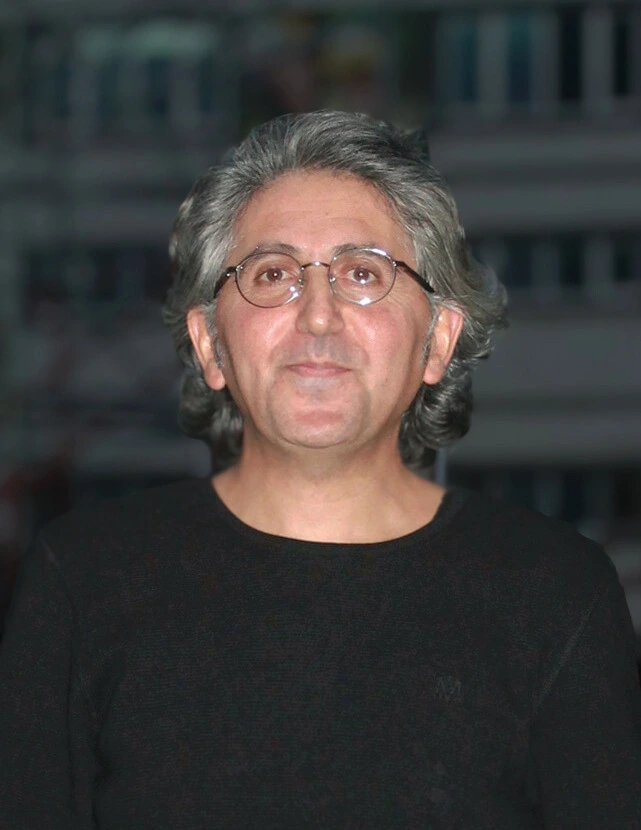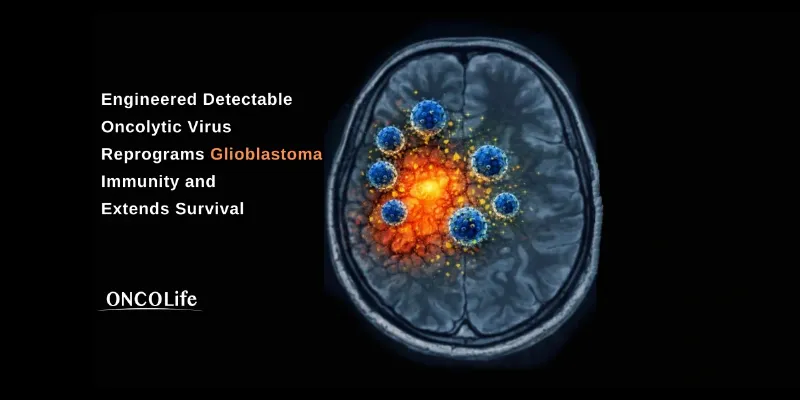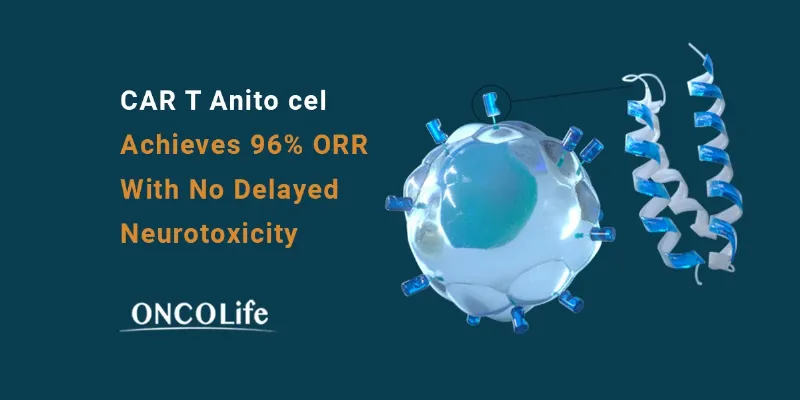Transforming Melanoma Treatment with DNA Plasmid Vaccine


ONCOLife |
28 October 2024
This novel DNA plasmid vaccine targets antigen-presenting cells and aims to induce a robust immune response. Prof. Lindy Durrant, CEO of Scancell, shared insights from the latest Phase 2 SCOPE trial results in this interview with ONCOLife. She expressed that the trial has demonstrated a notable 85% objective response rate in treating melanoma with SCIB1, an innovative DNA plasmid vaccine.
Prof. Lindy Durrant Discusses the SCOPE Trial and SCIB1
Prof. Durrant elaborates on the potential expansion of this approach to treat other cancers by modifying epitopes. She underscores the importance of combination therapies with checkpoint inhibitors to enhance T-cell potency. The next phase involves a randomized study to solidify the efficacy of this innovative treatment, highlighting a significant step forward in cancer immunotherapy.
Click the picture to view the PDF version: Pg 37-41.
The initial results from the SCOPE trial indicated an impressive 85% objective res-ponse rate in patients treated with SCIB1. Could you elaborate on the specific mechanisms by which SCIB1 and iSCIB1+ enhance the immune response against melanoma?
Prof. Durrant: The immunotherapy we are discussing is essentially a DNA plasmid that encodes a specific anti-body targeting antigen-presenting cells, which are crucial for initiating strong immune responses. By targeting these cells, particularly when they are activated, the therapy induces a robust immune response. Our focus has been on melanoma, specifically examining patients with pigmented, or “black,” melanoma who have shown signs of spontaneous regression.
We’ve identified specific T-cell targets, and incorporated these into the antibody to target dendritic cells. This approach is more direct compared to current personalized vaccines and is designed as an “off-the-shelf” option, mak-ing it applicable to anyone with this type of melanoma. Initially, we conducted a monotherapy study in two patient cohorts. The first gro-up, with metastatic disease, showed stable disease; we managed to halt disease progression but could not eliminate the tumors.
In the second cohort, comprising patients with resectable tumors, we observed a significant outcome where 88% of patients did not experience recurrence after being immunized with our drug—a highly encouraging result. We’ve since adopted a quicker approach to demonstrate the vaccine’s efficacy and to pursue regula-tory approval by focusing on the metastatic setting, now incorporating checkpoint inhibitors. These inhibitors enhance the activity and potency of the stimulated T cells within the tumor environment.
In our ongoing study, na-med SCOPE, we have observed tumor shrinkage in about 85% of patients—a significant increase from the typical 50% response rate seen with checkpoint inhibitors alone. Some patients even show complete tumor regression, though it’s premature to discuss cures as fol-low-up has been for only six months. Our next step involves a randomized study to prove our therapy’s superiority over checkpoint in-hibitors alone. Initial projections hoped for a 70% survival rate; clinicians are optimistic about potentially achieving an 85% rate.
Additionally, we’ve innovated vaccine delivery by employing a needle-free system using a PharmaJet device, enhancing the administration’s ease and patient com-pliance. We have two vaccine trials active in the clinic, the SCOPE trial and the ModiFY trial, il-lustrating our ongoing commitment to advancing cancer treatment through innovative immunother-apy.
With the second stage of the SCOPE trial set to read out in the third quarter of this year, what are the primary endpoints you are monitoring, and how will these results influence the future development of SCIB1?
Prof. Durrant: Our clinical trials prioritize safety, which our vaccine has shown, with no additional toxicity beyond what is typically associated with checkpoint inhibitors alone. A significant advantage when considering combination therapies. Toxicity can be a major concern when multiple compounds are involved, but our vaccine avoids compounding these issues.
We monitor the overall response rate, specifically whet-her the tumor regresses, to what extent, and in how many patients. We’re aiming to demonstrate a response rate exceeding 70% in our trials. However, it’s important to maintain this tumor regression over time, so we will be following up with patients for a full two years to ensure the durability of the response.
Our immunotherapy ap-proach is beneficial because once the immune system gains cont-rol over the tumor, it tends to main-tain that control. Our current focus is on iSCIB1+, a second-generation vaccine designed to be more inclusive and effective. While SCIB1 targeted a specific patient group with observed spontaneous tumor regressions, iSCIB1+ expands on this by including additional epi-topes, potentially making it suitable for everyone with advanced melanoma. This broader coverage will enhance commercial viability and improves patient outcomes. We’ve fine-tuned the targeting mechanisms, anti-cipating an even stronger response rate and durability, consistent with the original vaccine’s goals of safety and efficacy.
Scancell operates with two innovative platforms, ImmunoBody® and Moditope®. How do these platforms differ in their approach to cancer immunotherapy, and what synergies, if any, have you observed when integrating these technologies in your trials?
Prof. Durrant: SCIB1, our DNA vaccine, currently targets melanoma-specific antigens. We’re exploring modifica-tions to target other cancers, such
as colorectal or lung cancer, by changing the epitopes, making SCIB1 a versatile platform that could potentially set a new standard for cancer treatment across various types. The vaccine primarily stimulates killer CD8 T cells, which are highly effective at targeting and destroying tumor cells.
However, the challenge in cancer treatment isn’t just about killing tumor cells; it’s also about overcoming the immune-suppressive environment created by tumors.Our second vaccine aims to stimulate CD4 T cells using modified proteins combined with a pro-inflammatory adjuvant. These CD4 T cells can then alter the tumor’s immune environment, making the cancer cells more vulnerable to attack.
While our two vaccines target different mechanisms and cancers, there’s significant potential for synergy with checkpoint inhibitors. These inhibitors can enhance the effectiveness of the T cells activated by our vaccines, forming a potent combination therapy that tackles the challenging tumor environment. This integrated approach is central to our strategy in advancing cancer immunotherapy.
At this year’s ASCO Congress, Scancell presented a poster on the ongoing Phase 2 SCOPE trial. What were the key points of this presentation, and what feedback did you receive from the oncology community?
Prof. Durrant: This meeting was incredibly exciting for two reasons. Firstly, our Clinical Advisory Board, includ-ing clinicians, was very impressed with our data, believing our approach has potential beyond tra-ditional checkpoint therapies. However, they’ve emphasized the need for a randomized Phase 2 and 3 study to conclusively prove this and they were enthusiastic about our study design.
Secondly, at our poster presentation, we attracted significant attention from clinicians interested in joining our trial, major pharmaceutical companies, and venture capitalists. This level of interest was highly encouraging and shows we’re moving in the right direction.
Can you discuss the current status of the ModiFY trial for Modi-1 and what preliminary efficacy and safety data suggest about its potential in treating hard-to-treat cancers like head and neck and triplenegative breast cancer?
Prof. Durrant: In our ModiFY trial, we started cautiously, exploring cancer-related modifications. We conducted several dose-ranging studies and observed no toxicity. Currently, as with our previous work with SCIB1, the vaccine on its own stabilizes metastatic disease but doesn’t eliminate tumors. However, we have just received MRHA approval to combine the vaccine with checkpoint inhibitors, which protect and potentiate T cells, potentially transforming stable disease into actual tumor regression, and hopefully, achieving complete responses.
This is incredibly promising not only for renal cancer but potentially for any cancer, as modified proteins are a common stressrelated occurrence in tumors. We hare now focused on finding the optimal setting to demonstrate efficacy, secure approval, and advance our research.
Given the innovative nature of your vaccine platforms, how are you navigating the regulatory landscape, and what challenges and opportunities do you foresee in the regulatory approval process?
Prof. Durrant: Our regulatory interactions have primarily been in the UK with the MHRA, who have been very supportive and helpful. In terms of safety concerns with our vaccine, there have been no significant issues. One challenge we’ve faced involves the cost of combining our vaccine with checkpoint inhibitors.
In the UK and the US, checkpoint inhibitors are considered standard of care and are provided at no cost for our trials. This isn’t the case in Europe and many other countries, where we would have to bear the cost of both our vaccine and the checkpoint inhibitors, potentially tripling trial costs —a significant burden for a small biotech. Fortunately, the MHRA’s agreement that checkpoint inhibitors are standard care in the UK means we don’t face these extra costs. Our significant phase 2 and 3 trials will also be conducted in the UK and the US for similar financial and regulatory ease.
With the impressive 85% objective response rate ac-hieved in the SCOPE trial, what are your expectations regarding the sustainability of these results? Could you also outline your plans and expectations for the Phase III trial?
Prof. Durrant: It’s very exciting. The goal of our trial was to show a 20% improvement in response rates, from 50% to 70%. Achieving anything above 70% is seen as a success, and our current results are around 85%. As long as it stays above 70%, we’re moving to the next stage. Our clinical advisors believe the data is promising and not just a result of patient selection.
The next step is a randomized Phase 2/3 approval study, where half the patients receive only the checkpoints and the other half receive both the checkpoint and the vaccine. We’ll focus on the overall response and the duration of response—we’re aiming for at least two years, ideally five for complete responders. So far, in our current study with a maximum follow-up of a year, there has been no regression observed in patients. While this suggests sustainability, more prolonged and extensive testing is needed.











Comments
No Comments Yet!